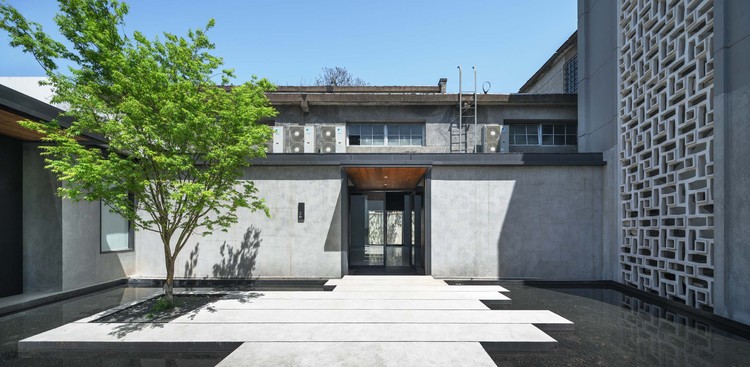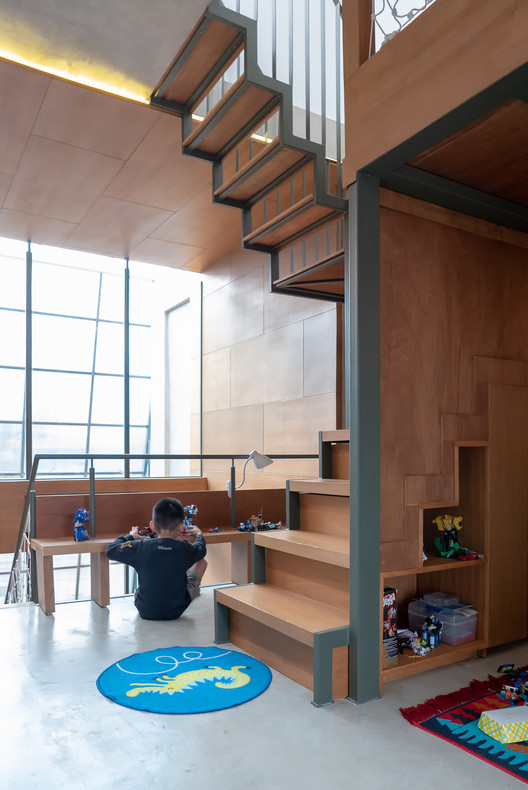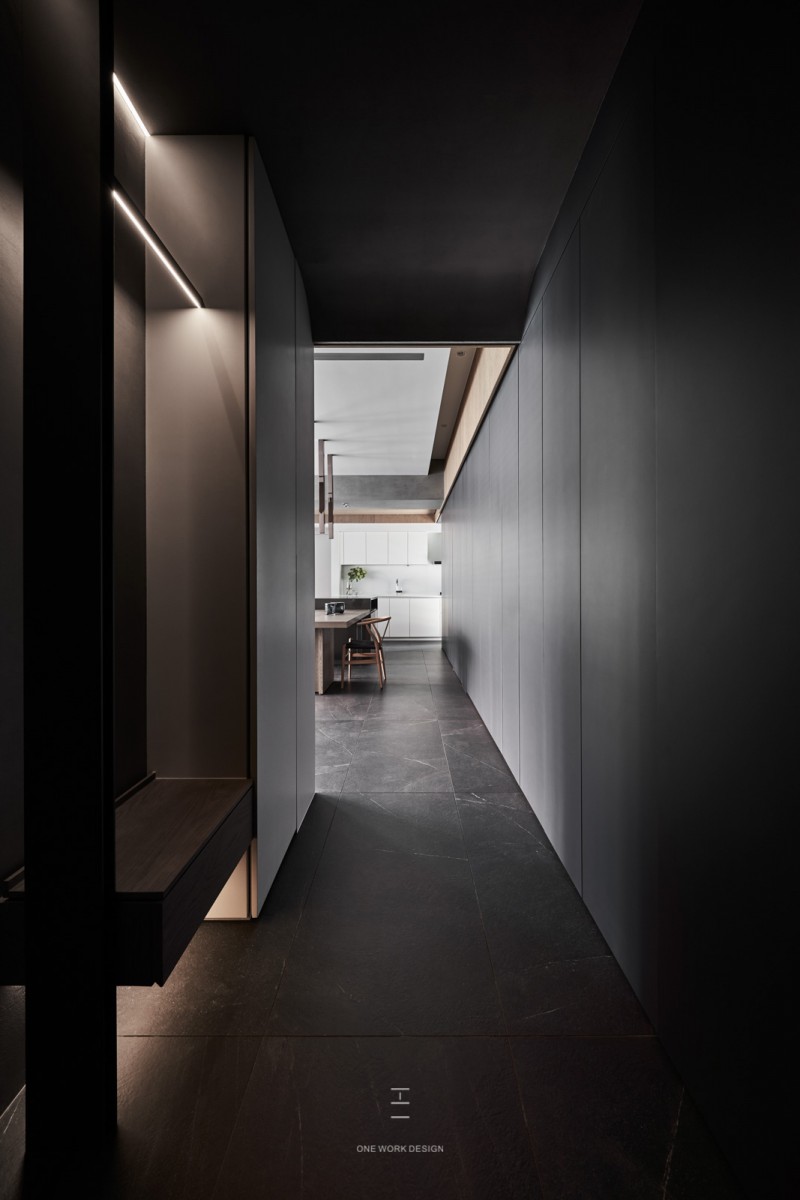AD Classics Montreal Biosphere Buckminster Fuller
2018-10-07 22:00
正是在这种社会和哲学背景下,富勒设计了蒙特利尔生物圈,1967年世界博览会的美国展馆。近二十年来,富勒一直在完善他的测地圆顶设计,在全国各地建立试验性的高尔夫球建筑,并稳步培养他的专业和受欢迎的名声。他对这种特殊结构的痴迷源于他对材料效率、结构完整性和模块化的兴趣,这是他希望成为一种可持续的、易于复制的设计干预的关键要素。从餐馆到军事设施,这些穹顶随处可见,这种多才多艺的结构与富勒有着非凡的联系,1964年1月一期“时代”杂志的封面就幽默地说明了这一点。
It was from this social and philosophical context that Fuller conceived his design for the Montreal Biosphere, the United States’ pavilion for the 1967 World Exposition. For almost twenty years, Fuller had been perfecting his designs of geodesic domes, dotting the country with experimental golf ball-looking buildings and steadily cultivating his professional and popular notoriety. His obsession with this particular type of structure emerged from his interests in material efficiency, structural integrity, and modularity, the key ingredients of what he hoped would become a sustainable, easily replicable design intervention. Deploying these domes everywhere from restaurants to military facilities, the versatile structure became singularly associated with Fuller, as was humorously illustrated by a January 1964 cover of Time Magazine.
It was from this social and philosophical context that Fuller conceived his design for the Montreal Biosphere, the United States’ pavilion for the 1967 World Exposition. For almost twenty years, Fuller had been perfecting his designs of geodesic domes, dotting the country with experimental golf ball-looking buildings and steadily cultivating his professional and popular notoriety. His obsession with this particular type of structure emerged from his interests in material efficiency, structural integrity, and modularity, the key ingredients of what he hoped would become a sustainable, easily replicable design intervention. Deploying these domes everywhere from restaurants to military facilities, the versatile structure became singularly associated with Fuller, as was humorously illustrated by a January 1964 cover of Time Magazine.
Time Magazine, January 10, 1964. Image © Time Inc.
在富勒的所有穹顶中,生物圈可能是最壮观的。直径76米,膨胀的球体到达一个令人震惊的62米的天空,彻底支配着它所处的岛屿。里面的容量是如此的宽敞,它舒适地适合一个七层高的展览大楼,展示了展览的各种方案元素。即使在世博会其他令人印象深刻的景点中-包括弗雷·奥托(Frei Otto)的钢缆德国馆和莫舍·萨夫迪(Mohe Safdie)的标志性人居67-生物圈仍然占据着主导地位,吸引了530万游客。[1]
Of all of Fuller’s domes, the Biosphere is perhaps the most spectacular. At a diameter of seventy-six meters, the expansive sphere reaches an astounding sixty-two meters into the sky and thoroughly dominates the island on which it is located. The volume contained within it is so spacious that it comfortably fits a seven-story exhibition building featuring the various programmatic elements of the exhibit. Even amidst the Exposition’s other impressive attractions—including Frei Otto’s steel cabled German Pavilion and Moshe Safdie’s iconic Habitat 67—the Biosphere reigned supreme, attracting an event-high 5.3 million visitors within six months of its opening. [1]
Of all of Fuller’s domes, the Biosphere is perhaps the most spectacular. At a diameter of seventy-six meters, the expansive sphere reaches an astounding sixty-two meters into the sky and thoroughly dominates the island on which it is located. The volume contained within it is so spacious that it comfortably fits a seven-story exhibition building featuring the various programmatic elements of the exhibit. Even amidst the Exposition’s other impressive attractions—including Frei Otto’s steel cabled German Pavilion and Moshe Safdie’s iconic Habitat 67—the Biosphere reigned supreme, attracting an event-high 5.3 million visitors within six months of its opening. [1]
© Flickr user Rodrigo Maia
在几何上,穹顶是一个二十面体,一个20边的形状,由五边形的中间作用形成一个六角形的网格.然而,这种形状的清晰度由于其表面的碎裂而变得模糊不清,这些面被细分为一系列等边三角形,这些三角形带有微小的扭曲,使各个平面截面弯曲成贝壳。因此,穹顶的总体组成比简单的二十面体更接近球形,而较小的单位则通过纯粹的重复创造了令人眼花缭乱的视觉复杂性。这种点阵式结构完全由三英寸钢管组成,焊接在接头处,向结构顶部轻轻变薄,以便在整个系统中最优地分配力。
Geometrically, the dome is an icosahedron, a 20-sided shape formed by the interspersion of pentagons into a hexagonal grid. However, the clarity of this form is obfuscated by the fragmentation of its faces, which are subdivided into a series of equilateral triangles with minor distortions that bow the individual planar sections into shells. As a result, the aggregate composition of the dome is substantially more spherical than simple icosahedra, while the smaller units create dazzling visual complexity through sheer repetitiousness. This lattice-type structure is created entirely of three-inch steel tubes, welded at the joints and thinning gently toward the top of the structure so as to optimally distribute forces throughout the system.
Geometrically, the dome is an icosahedron, a 20-sided shape formed by the interspersion of pentagons into a hexagonal grid. However, the clarity of this form is obfuscated by the fragmentation of its faces, which are subdivided into a series of equilateral triangles with minor distortions that bow the individual planar sections into shells. As a result, the aggregate composition of the dome is substantially more spherical than simple icosahedra, while the smaller units create dazzling visual complexity through sheer repetitiousness. This lattice-type structure is created entirely of three-inch steel tubes, welded at the joints and thinning gently toward the top of the structure so as to optimally distribute forces throughout the system.
最初在1976年被大火摧毁的薄丙烯酸薄膜中,最初建造的圆顶比今天所经历的版本更加不透明和视觉上坚固。然而,其目前的结构裸体虽然是建筑师的无意,却创造了一个清晰可辨的透明度,完全揭示了Fuller设计的独创性。在建筑物外部,通过球体的视线穿过两个表面上的外壳而不进行材料区分,从而连续地读取内部和外表面,作为单个结构织物本身弯曲的小平面。随着丙烯酸填充的去除,圆顶的经验重点从空间外壳转移到结构本身的感官上的奇迹。然而,展览建筑的未编排性的可见性也是不可原谅的,它的吸引力是不可原谅的,有时类似于在规模最大的雪球Kittsch上采取的令人失望的现代。
Originally sheathed in a thin acrylic membrane that was destroyed by fire in 1976, the dome as originally built was more opaque and visually solid than the version experienced today. However, its present structural nakedness, though unintended by the architect, creates a beautifully legible transparency that fully reveals the ingenuity of Fuller’s design. Standing outside the building, sightlines through the sphere penetrate the shell on two surfaces without material differentiation, resulting in a continuous reading of interior and exterior surfaces as facets of a single structural fabric curving in on itself. With the acrylic infill removed, the experiential emphasis of the dome shifts from spatial enclosure to the sensorial wonder of the structure itself. The unchoreographed visibility of the exhibition building within, however, is forgivably less appealing, at times resembling a disquietingly modern take on snowglobe kitsch at the grandest of scales.
Originally sheathed in a thin acrylic membrane that was destroyed by fire in 1976, the dome as originally built was more opaque and visually solid than the version experienced today. However, its present structural nakedness, though unintended by the architect, creates a beautifully legible transparency that fully reveals the ingenuity of Fuller’s design. Standing outside the building, sightlines through the sphere penetrate the shell on two surfaces without material differentiation, resulting in a continuous reading of interior and exterior surfaces as facets of a single structural fabric curving in on itself. With the acrylic infill removed, the experiential emphasis of the dome shifts from spatial enclosure to the sensorial wonder of the structure itself. The unchoreographed visibility of the exhibition building within, however, is forgivably less appealing, at times resembling a disquietingly modern take on snowglobe kitsch at the grandest of scales.
The 1976 fire. Image from Reddit.
© Flickr user Dan Sorensen
作为一项建筑成就,生物圈是富勒对技术承诺的理想化的缩影。通过整体考虑、系统化和大规模生产,他认为这个项目是建筑师如何运用和运用创新工具,为人类创造新的高效机器的一个例子。生物圈纯粹的几何图形的美是一种美学上的奖励,是一种功能主义和伦理追求的有意但从属的成功。然而,通过优化传递这种乐观信息的结构的能力可能已经丧失了那些寻求并努力为Fuller的发明寻找实际应用的人的能力。尽管壳结构在国际建筑中一直作为标准设备存在,但测地穹顶却从未达到富勒的期望,他的理想主义努力也为他寻求改善的人类环境带来了很少的实际成果。
As an architectural achievement, the Biosphere epitomizes Fuller's idealization of the promise of technology. Through holistic consideration, systemization and mass-production, he saw this project as an example of how architects could wield and deploy the instruments of innovation to create new species of hyper-efficient machines for the good of mankind. The beauty of the Biosphere’s pure geometries was an aesthetic bonus, the intentional but subordinate success of a functionalist and ethical pursuit. However, the capacity of the structure to communicate this message of optimism-through-optimization may have been lost on those who sought and struggled to find practical applications for Fuller’s invention. Although shell structures have endured as standard devices in the international architectural repertoire, geodesic domes in particular never achieved the mass-adoption Fuller hoped for, and his idealistic labors translated into few tangible gains for the human condition he sought to improve.
As an architectural achievement, the Biosphere epitomizes Fuller's idealization of the promise of technology. Through holistic consideration, systemization and mass-production, he saw this project as an example of how architects could wield and deploy the instruments of innovation to create new species of hyper-efficient machines for the good of mankind. The beauty of the Biosphere’s pure geometries was an aesthetic bonus, the intentional but subordinate success of a functionalist and ethical pursuit. However, the capacity of the structure to communicate this message of optimism-through-optimization may have been lost on those who sought and struggled to find practical applications for Fuller’s invention. Although shell structures have endured as standard devices in the international architectural repertoire, geodesic domes in particular never achieved the mass-adoption Fuller hoped for, and his idealistic labors translated into few tangible gains for the human condition he sought to improve.
© Flickr user Richard Winchell
不幸的是,富勒关于建筑师的力量和技术的潜力的独特的充满希望的哲学受到了与他的穹顶一样有趣的怀疑主义的欢迎。面对20世纪60年代末的社会动荡和现代主义日益明显的失败,理论家尤其开始放弃伦理实证主义和人文主义,在建筑中寻求更深层次的意义。不久,随着后结构理论的广泛出现和它的发展,富勒认为建筑道德至上的信念几乎被他的同龄人所抛弃。1976年的大火之后,伤痕累累的生物圈被抛弃,与公众隔绝,这是一个充满希望和理想主义的过去时代的悲剧性纪念碑。
Unfortunately, Fuller’s uniquely hopeful philosophy about the power of the architect and the potential of technology was met with the same reception of intrigued skepticism that befell his dome. In response to the social upheavals of the late 1960s and the increasingly apparent failures of modernism, theorists in particular began to turn away from ethical positivism and humanism in general in their search for deeper meaning in architecture. Soon, with the widespread arrival of post-structural theory and its devolutions, the belief Fuller held in the primacy of an architectural moral imperative was all but abandoned by his peers. After the fire of 1976, the scarred Biosphere was abandoned and sealed off from the public, a tragic monument to a bygone era of hope and idealism.
Unfortunately, Fuller’s uniquely hopeful philosophy about the power of the architect and the potential of technology was met with the same reception of intrigued skepticism that befell his dome. In response to the social upheavals of the late 1960s and the increasingly apparent failures of modernism, theorists in particular began to turn away from ethical positivism and humanism in general in their search for deeper meaning in architecture. Soon, with the widespread arrival of post-structural theory and its devolutions, the belief Fuller held in the primacy of an architectural moral imperative was all but abandoned by his peers. After the fire of 1976, the scarred Biosphere was abandoned and sealed off from the public, a tragic monument to a bygone era of hope and idealism.
1990年,经过近15年的废弃后,加拿大政府购买了生物圈,并将其重新用作环境展览空间,致力于促进对圣劳伦斯河和大湖区生态系统的了解。这是对富勒的一个恰当的赞扬,他被广泛认为是第一批将可持续性概念广泛应用的建筑师之一。生物圈的重生还预示着可持续性理论的出现,将建筑思想与学术界自此忽视的世俗关切重新组合起来,证实了富勒不知疲倦地倡导以服务于自然和人类为基础的建筑专业。
In 1990, after nearly fifteen years of disuse, the Biosphere was purchased by the Canadian government and re-purposed as an environmental exhibition space, dedicated to promoting an understanding of the St. Lawrence River and the ecosystem of the Great Lakes. It was a fitting tribute to Fuller, who has been widely recognized as one of the first architects to bring the concept of sustainability into widespread use. The rebirth of the Biosphere also heralded the emergence of sustainability theory as a realignment of architectural thought with the worldly concerns that the academe had since discounted, validating Fuller's tireless advocacy of an architectural profession grounded in service to nature and humanity.
In 1990, after nearly fifteen years of disuse, the Biosphere was purchased by the Canadian government and re-purposed as an environmental exhibition space, dedicated to promoting an understanding of the St. Lawrence River and the ecosystem of the Great Lakes. It was a fitting tribute to Fuller, who has been widely recognized as one of the first architects to bring the concept of sustainability into widespread use. The rebirth of the Biosphere also heralded the emergence of sustainability theory as a realignment of architectural thought with the worldly concerns that the academe had since discounted, validating Fuller's tireless advocacy of an architectural profession grounded in service to nature and humanity.
© Flickr user Dan Sorensen
[1]理查德·巴克敏斯特·富勒:一个有远见的建筑师。加拿大环境部。2014年11月18日检索:http:/www.ec.gc.ca/生物圈/default.asp?lang=en
[1] “Richard Buckminster Fuller: A Visionary Architect.” Environment Canada. Retrieved 18 November 2014 from http://www.ec.gc.ca/biosphere/default.asp?lang=En&n=30956246-1
[1] “Richard Buckminster Fuller: A Visionary Architect.” Environment Canada. Retrieved 18 November 2014 from http://www.ec.gc.ca/biosphere/default.asp?lang=En&n=30956246-1
[2]Mallgrave,Harry Francis和David Goodman。建筑理论概论:1968年至今。威利-布莱克韦尔,联合王国:2011年。
[2] Mallgrave, Harry Francis and David Goodman. An Introduction to Architectural Theory: 1968 to the Present. Wiley-Blackwell, United Kingdom: 2011.
[2] Mallgrave, Harry Francis and David Goodman. An Introduction to Architectural Theory: 1968 to the Present. Wiley-Blackwell, United Kingdom: 2011.
[3]Martin,Reinhold。“水晶球”有:纽约建筑,第17号,忘了富勒吧?所有你一直想知道的富勒,但不敢问(1997年),第35-39页。
[3] Martin, Reinhold. "Crystal Balls." ANY: Architecture New York, No. 17, Forget Fuller? Everything you always wanted to know about Fuller but were afraid to ask (1997), pp. 35-39.
[3] Martin, Reinhold. "Crystal Balls." ANY: Architecture New York, No. 17, Forget Fuller? Everything you always wanted to know about Fuller but were afraid to ask (1997), pp. 35-39.
[4]章节图:Kalin,“建筑材料、系统和技术概览”。我是梅西乔纳森。巴克明斯特·富勒的“控制论田园”:67世博会上的美国馆。建筑学报11.4(2006):463-83。
[4] Section Drawing: Kalin, Survey of Building Materials, Systems, and Techniques. From Massey, Jonathan. "Buckminster Fuller's Cybernetic Pastoral: The United States Pavilion at Expo 67." Journal of architecture 11.4 (2006): 46
[4] Section Drawing: Kalin, Survey of Building Materials, Systems, and Techniques. From Massey, Jonathan. "Buckminster Fuller's Cybernetic Pastoral: The United States Pavilion at Expo 67." Journal of architecture 11.4 (2006): 46
建筑师巴克敏斯特富勒位置160 Chemin旅游-de-l‘Isle,le Sainte-Hélène,Parc Jean-Drapeau项目年1967年照片Flickr用户abdallahh,Flickr用户Ehsan,Flickr用户Richard Winchell,Flickr用户Rodrigo Maia,Flickr用户Dan Sorensen,Flickr用户Michael Wu,Time Inc。类别学习
Architects Buckminster Fuller Location 160 Chemin Tour-de-l'Isle,Île Sainte-Hélène, Parc Jean-Drapeau Project Year 1967 Photographs Flickr user abdallahh, Flickr user Ehsan, Flickr user Richard Winchell, Flickr user Rodrigo Maia, Flickr user Dan Sorensen, Flickr user Michael Wu, Time Inc. Category Learning
Architects Buckminster Fuller Location 160 Chemin Tour-de-l'Isle,Île Sainte-Hélène, Parc Jean-Drapeau Project Year 1967 Photographs Flickr user abdallahh, Flickr user Ehsan, Flickr user Richard Winchell, Flickr user Rodrigo Maia, Flickr user Dan Sorensen, Flickr user Michael Wu, Time Inc. Category Learning
 举报
举报
别默默的看了,快登录帮我评论一下吧!:)
注册
登录
更多评论
相关文章
-

描边风设计中,最容易犯的8种问题分析
2018年走过了四分之一,LOGO设计趋势也清晰了LOGO设计
-

描边风设计中,最容易犯的8种问题分析
2018年走过了四分之一,LOGO设计趋势也清晰了LOGO设计
-

描边风设计中,最容易犯的8种问题分析
2018年走过了四分之一,LOGO设计趋势也清晰了LOGO设计
































































